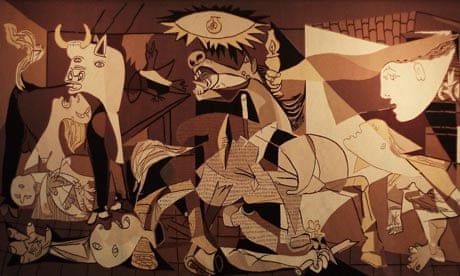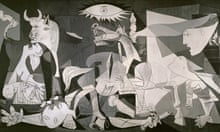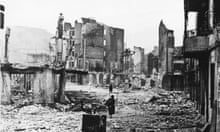In occupied Paris, a Gestapo officer who had barged his way into Picasso’s apartment pointed at a photo of the mural, Guernica, asking: “Did you do that?” “No,” Picasso replied, “you did”, his wit fizzing with the anger that animates the piece. Work started weeks after German bombers had unleashed an early dose of Blitzkreig on the Basque town from which the work takes its name. It was first shown at the world fair in Paris, supposedly a showcase for scientific progress, but the deaths of hundreds of civilians in a small Spanish town proved technology’s darker side. As in Picasso’s cubist days, there are symbols and broken shapes aplenty, but with Guernica there is no need to decipher. The message is stark, with immediate impact. In black and white, the piece has the urgency of a newspaper photo. Flailing bulls and horses show that the visceral horrors of war are not just an affront to human civilisation, but to life. With the help of Stepney trade unionists, keen to raise awareness of Spain’s civil war, in 1939 Guernica came to Whitechapel art gallery. Next week the gallery reopens after an overhaul, and a full-size tapestry copy will form part of an installation by artist Goshka Macuga. It is borrowed from the UN, where it normally hangs outside the security council chamber. When Colin Powell was setting out the American case for war against Iraq in 2003, it was decided it would be “appropriate” to cover it up, a tale that offers a powerful rejoinder to Wildean quips about all art being perfectly useless.

In praise of ... Guernica
This article is more than 15 years old
Editorial
Flailing bulls and horses show that the visceral horrors of war are not just an affront to human civilisation, but to life





